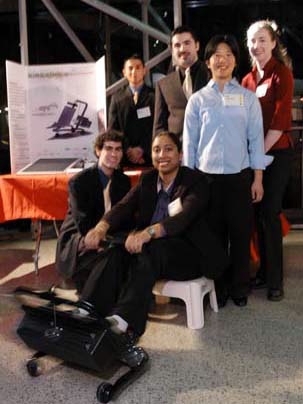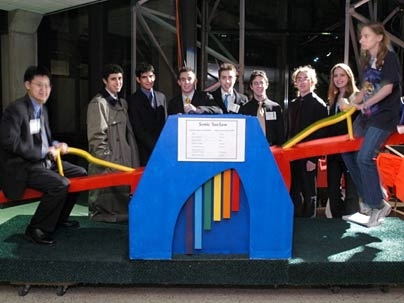Mechanical engineering seniors designed and built prototypes of products united by the theme of energy--alternative, conservation or clean--in just three months this term in 2.009 (Product Engineering Processes).
This required senior design course culminates each December in a product fair featuring prototype demonstrations and business plan presentations before an audience of Boston-area professionals who critique and rate the students' work. This year's event was held Dec. 8 in Edgerton Hall.
Challenges faced by the six teams of 15-20 students weren't simply engineering related. They also had to learn to work in teams under fairly intense deadline pressure (just as they'll need to do once they're employed in industry), face expert (faculty) panels who had the power to approve their ideas or send them back to the drawing board, and think through the manufacturing and marketing aspects of the design--all on a tight budget.
Their collective thousand-plus hours of work resulted in a set of six innovative products, four of which were designed specifically with the developing world in mind.
- The Sol Pump, a solar-powered well pump;
- Sugar cane charcoal extruder that makes an alternative cooking fuel out of sugar cane waste;
- Kinkajuice, a human-powered battery charger that looks like a rowing machine;
- The VacPac, a vaccine cooling backpack that runs on solar, biomass, diesel or electric power;
- The MP 4ever, a self-powered MP3 player that uses a jogger's own efforts to recharge; and
- Sonic See-Saw, a musical children's see-saw designed for safety, comfort and durability.
For more information and photos of the products, see the course web site (web.mit.edu/2.009). The course is sponsored by the Lemelson Foundation, Ford, General Motors and United Technologies.
A version of this article appeared in MIT Tech Talk on December 15, 2004 (download PDF).







